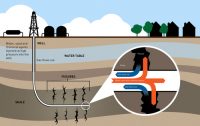Sufficiently Sensitive Testing Methods Rule—The Rationale
Sufficiently Sensitive Testing Methods Rule—The Rationale Under the Clean Water Act’s (CWA) NPDES program, the EPA established and required “sufficiently sensitive” analytical methods be used by permit applicants and for “analysis of pollutants or pollutant parameters under an NPDES permit.” These “generally approved” methods under 40 CFR Part 136 and 40 CFR Chapter I, […]










